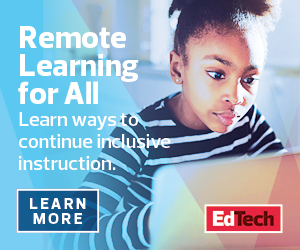Students See Benefits of Devices with Multiple Inputs
For some students, especially younger learners whose fine motor skills are still developing, it can be difficult to navigate a device with a trackpad. These students can benefit from having multiple modes of input to a device. High-quality audio and video equipment can also ensure students are able to be immersed in their learning, regardless of environment or abilities.
A headset with a microphone can make a big difference. The headset “instantly provides immersive and focused learning spaces,” Mortimore says. “The microphone also ensures student voices can be heard, which leads to an increase in participation and overall student confidence.”
A high-quality mouse can likewise ensure students can interact effectively with their devices. “For students under the age of 14, fine motor skills are still being developed. Mice are a critical tool in ensuring the device can be used effectively for any task assigned,” Mortimore says.
MORE ON EDTECH: Boost the success of e-learning with these tools.
“Mice increase the speed of completing tasks by up to 30 percent, and productivity by 50 percent,” she says. “This is essential for assignments that involve PowerPoint presentations, editing documents and spreadsheets.”
To broaden the range of possible inputs, Logitech also offers Logitech Crayon, a digital pencil that can help boost accuracy and legibility when taking notes or engaging in handwritten work digitally.
“Instead of using a finger or a digital pencil with limited precision, Crayon ensures student work is accurately reflected, which makes it easier for teachers to grade work and students to collaborate with their peers or reread notes in the future,” Mortimore says.
The Rugged Combo 3 Keyboard Case allows students the flexibility to write seamlessly on iPad devices, helping them work on a variety of digital assignments and tasks — viewing, reading, writing, manipulating the camera and more. The keyboard also improves ergonomics, reducing the likelihood of back pain from hunching over an iPad for long periods.













